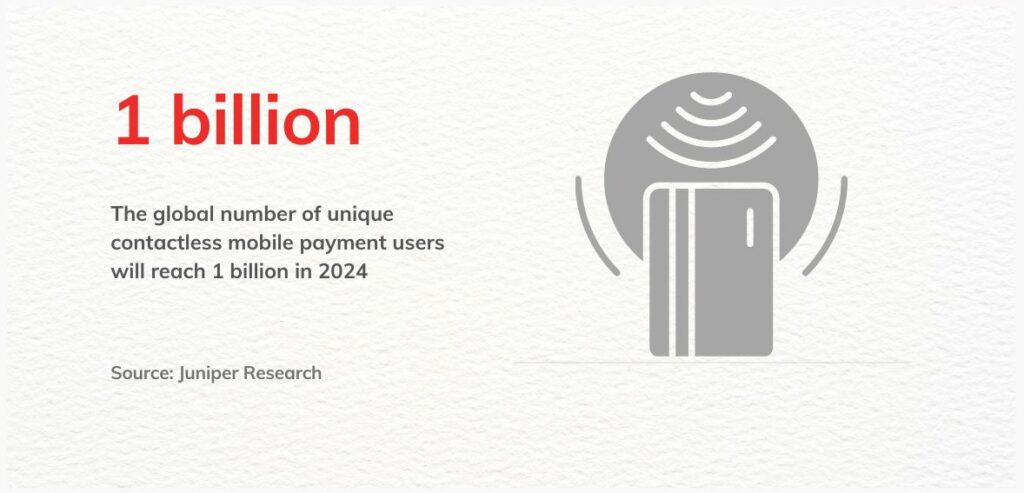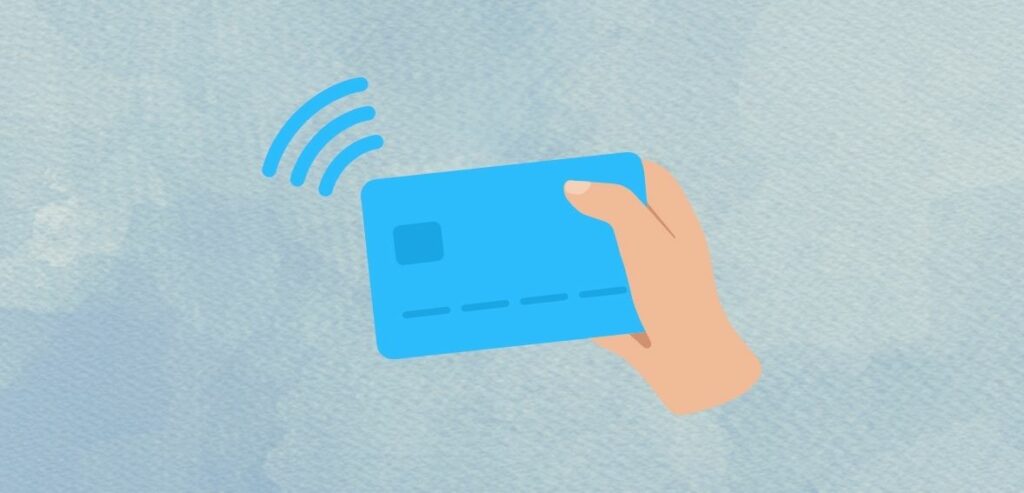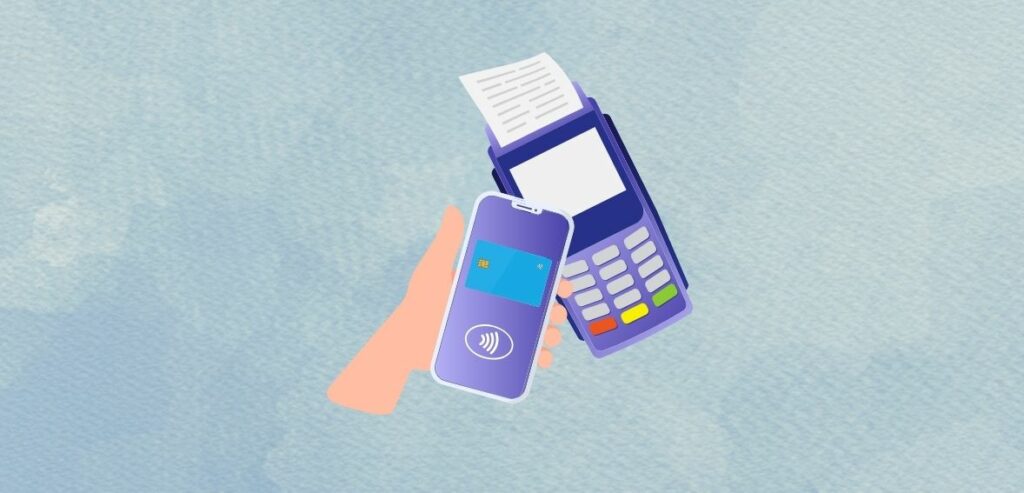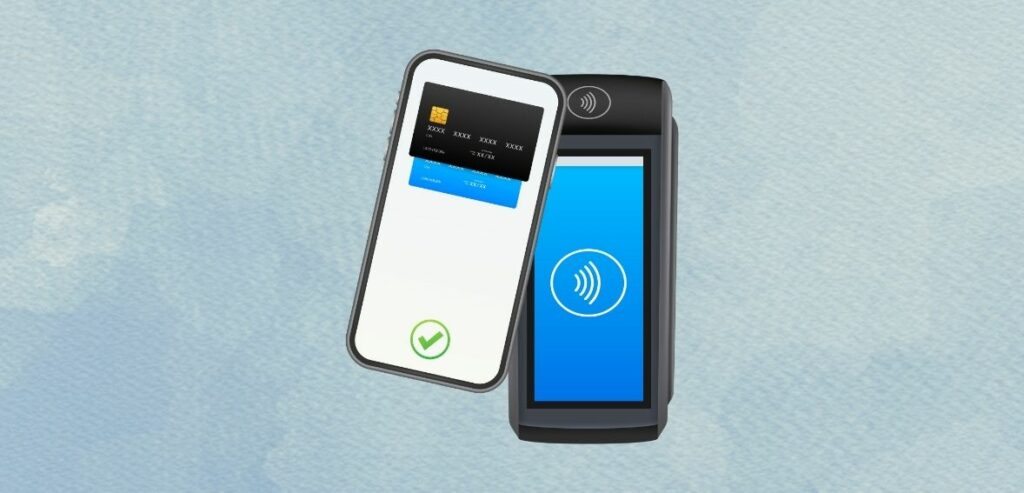In 2023, 51% of smartphone users in the US tried contactless payments at least once. Studies also suggest that by 2024, the global number of unique contactless mobile payment users will reach 1 billion, indicating a significant rise in contactless payment usage. Near-field communication (NFC) payments have surged in popularity, allowing customers to make payments without physical contact. This trend saves time, eliminates the need for a physical wallet, and offers other conveniences.
The evolution of NFC payments has enhanced the checkout experience. This article will explore NFC mobile payments, what they mean, how they function, and strategies for integrating them into your business.

Source: Juniper Research
Understanding NFC Mobile Payments
NFC mobile payments utilize Near Field Communication (NFC) technology to conduct transactions wirelessly. This tech allows devices, like smartphones and payment terminals, to communicate when they’re close together, typically within a few centimeters. Unlike traditional cards that need swiping or insertion, NFC payments transmit data via radio waves.
If your credit card has an icon resembling a signal (![]() ), it likely has NFC capability, allowing you to pay by tapping it on a compatible reader. In addition to NFC-enabled credit cards, various companies offer NFC payment options, allowing buyers to use their smartphones for purchases, known as digital wallets.
), it likely has NFC capability, allowing you to pay by tapping it on a compatible reader. In addition to NFC-enabled credit cards, various companies offer NFC payment options, allowing buyers to use their smartphones for purchases, known as digital wallets.
NFC payments are highly secure. They generate a unique token for each transaction without disclosing card details to merchants. Embracing NFC mobile payments can enhance customer experiences and boost revenue for businesses of all sizes.
How NFC Mobile Payments Work?

NFC uses the radio frequency waves already utilized by mobile phones, operating within proximity, usually a few centimeters, from the phone to a reader or payment device. This short distance ensures customers aren’t inadvertently paying for others’ purchases, adding a built-in security layer.
When the reader and payment devices are nearby and activated, encrypted payment information is shared between the NFC chips to finalize the NFC payment. To initiate the transactions, you need to approve the payment beforehand from your device using methods such as fingerprint recognition, passcode, or face ID. After verification, the transaction details are sent to the NFC terminal via a distinct, randomly created one-time code. This code, rather than the customer’s debit card information, is then forwarded to the merchant.
Card information transmission occurs in an encrypted format that is not susceptible to hacking attempts. This streamlined process results in lightning-fast checkouts, making NFC mobile payments both secure and convenient. It’s no wonder that NFC-powered payments through apps like Google Pay and Apple Pay are gaining popularity.
The contactless connection between devices is facilitated by radio waves, just like the RFID labels used in various applications. NFC chips operate on a specific RFID frequency of 13.56MHz, functioning only when both devices are placed close to each other.
Is NFC Payment Secure?
Using a mobile device for payments may cause discomfort for some, mainly because we tend to guard our wallets closely. However, Near Field Communication (NFC) payments offer significantly greater security than traditional magnetic-stripe cards. Unlike the static data on magnetic-stripe cards, NFC transaction data is constantly encrypted and dynamic.
Take, for example, Apple Pay or Google Pay. These services employ a technology known as tokenization to protect banking information. The process begins when you capture an image of your credit card and upload it onto your Android or iPhone, which then forwards the details to the card’s issuing bank or network. In response, the bank or network generates a random series of numbers (the token) to replace your banking details. This token is returned and stored on your phone, rendering the account details useless to thieves.
Apple Pay and Google Pay incorporate additional security measures such as Touch ID, Face ID, or passcode verification. To conduct a transaction with either service, you must unlock your phone using one of these methods. This ensures that, even if your phone is stolen, the thief cannot access your data.
What are the Benefits of NFC Mobile Payments?

Here are some of the benefits of NFC payments:
- Faster
NFC payments can significantly expedite checkout due to their contactless and encrypted nature. In fact, Near-field communication (NFC) boasts a faster data transfer rate compared to standard Bluetooth and RFID technologies. NFC operates at 424 kbps, while Bluetooth typically ranges from 1 to 3 Mbit/s, and RFID has a data transmission rate of 106 kbps.
By adopting NFC payments, businesses can streamline transactions, reduce the time spent handling cash, and surpass the speed of traditional card-swiping methods.
- Cost Reduction and Adaptability:
The adoption of NFC payment devices reduces costs by eliminating the necessity for expensive upgrades to point-of-sale infrastructure. Since most modern smartphones already possess built-in NFC capabilities, businesses can adapt to this technology without significant additional expenses.
- Secured
NFC payments offer high levels of security, which is particularly attractive to businesses aiming to foster consumer trust. Near Field Communication (NFC) employs two-way encryption technology, allowing devices near exchange encrypted data during transactions.
This encryption process transforms data from plaintext to ciphertext, ensuring its confidentiality and integrity. Like chip-enabled payment cards, NFC adheres to stringent security protocols, making it a more secure option than traditional card-swiping methods.
- Convenience
Contactless payments offer added convenience for businesses and customers, aligning with the growing reliance on smartphones. Instead of searching for cash or a credit card, customers can use their phone or wearable device, such as an Apple Watch, to make payments by hovering it over the reader.
- Expanded Payment Options for Customers
NFC technology provides customers with various payment options, enhancing the checkout experience. Customers can enjoy faster transactions, eliminate the need for cash or physical cards, and choose their preferred payment method.
Whether using mobile wallet systems like Google Pay, Apple Pay, Samsung Pay, or even physical NFC payment cards, customers can make purchases in their preferred manner.
- Enhanced Customer Engagement:
With NFC payments, businesses can establish personalized loyalty programs using digital wallets or specialized payment apps. This fosters stronger customer relationships and encourages repeat business, ultimately improving engagement.
How Can Your Business Start Accepting NFC Payments?

Processing NFC mobile payments for your business is simple. First, select a payment processor that supports NFC-enabled technology. Next, secure a merchant account with the chosen bank or processing company. Then, connect the card reader and start accepting payments seamlessly.
Here are the main steps to set up NFC payments:
- Choose a payment processor:
Ensure your processor supports all necessary payment options, including storefront card processing, mobile payments, website integration, and contactless payments. Verify that the processor is PCI compliant and offers reasonable rates.
- Select an NFC-enabled reader:
Consider factors such as software compatibility, reading distance, read/write speed (some readers can handle up to 5 tags per second), connection interface (USB, Bluetooth, or Ethernet), chip type (MIFARE, ICODE, or NTAG), and frequency matching between the tag and reader.
- Install the reader and its software:
Download the NFC Tools software onto your device to install the NFC reader and its software. Once downloaded, follow the provided instructions to install the software.
After installation, plug the NFC reader into your device. Use a lightning or USB-C adapter to connect the reader to your device’s port if necessary. Then, follow the application’s instructions to complete the setup process, ensuring proper connection and configuration of the reader.
- Connect to the internet:
Next, connect to the internet by accessing your device’s settings. Navigate to “Device Settings” and then select “Network.” In the Wi-Fi Networks section, locate and tap “Turn Wi-Fi On.”
Choose your preferred network. Enter the network password in the designated “Enter Password” field and press “Close.” Finally, press “Connect” to connect to the selected network.
- Create a Merchant Account:
To establish a merchant account, create one with your selected payment processor, ensuring to furnish all necessary information and documents as requested.
- Accept Payments:
To pay, the customer must place their card, mobile device, or wearable accessory near the terminal. Once in close proximity, the NFC tags on the customer’s payment method will automatically activate a transaction. From there, you can proceed to complete the transaction in the same manner as you would for credit card payments.
Once you’ve processed payments with an NFC reader, the funds will be deposited directly into your merchant account, similar to standard credit card transactions. Typically, these funds are automatically transferred to your business bank account the next day. However, you might need to initiate transfers at times to manage your balance effectively manually.
Which Industries are Leveraging NFC Mobile Payments?
NFC technology has revolutionized how companies accept payments, offering immediate transaction capabilities. This convenience has led to its widespread preference among consumers and businesses alike. Below are some key sectors utilizing NFC payments:
- Retail Sector: Many retail outlets, including big-box stores, apparel shops, and electronics outlets, have adopted NFC technology to streamline the checkout process. Shoppers can complete their purchase by bringing their NFC-equipped payment method close to the checkout system’s NFC reader. This seamless interaction speeds up the transaction process and enhances the shopping experience.
- Diners: Numerous eateries have implemented NFC technology to simplify settling the bill, thereby minimizing the risks of cash transactions. Patrons can effortlessly pay for their meals directly from their table using NFC-compatible payment methods, eliminating the need to wait for physical bills or payment terminals.
- Event Venues: For event organizers hosting concerts, fairs, and sports events, NFC payment solutions offer a convenient way for attendees to make purchases. This method supports efficient ticket sales and on-site purchases, improving the overall event experience.
- Healthcare Providers: Medical professionals, including physicians, dentists, and therapists, have integrated NFC payments into their services, allowing for easier billing processes for patients and their families. This adoption ensures healthcare providers can concentrate on care delivery without being distracted by payment procedures, as NFC technology automates these transactions.
- Fitness and Wellness Industry: Fitness centers, yoga studios, and rehabilitation facilities increasingly utilize NFC payments to collect fees from their clientele. With fitness management software, NFC payments provide a seamless and secure payment option, enhancing client satisfaction and operational efficiency.
- Public Transportation: Public transit systems, such as railways, airports, and bus networks, have fully adopted NFC payments. This tap-and-go method suits advanced fare collection systems, facilitating seamless passenger flow through entry points and transfers. Adopting contactless payments in transit ensures smooth, secure travel experiences for commuters, eliminating potential delays.
By integrating NFC technology, these sectors have streamlined their payment processes and elevated the customer experience, underscoring the versatile benefits of contactless transactions.
Conclusion
The surge in NFC mobile payments reflects a paradigm shift in global transactions. With a projected one billion users by 2024, NFC payments offer unparalleled convenience, security, and efficiency. Utilizing Near Field Communication (NFC) technology, these payments facilitate seamless transactions between smartphones and payment terminals, eliminating the need for physical contact.
NFC payments are highly secure, with encrypted data exchange and tokenization, and offer faster checkouts, reduced costs, and expanded customer payment options. By embracing NFC technology, businesses across various industries can enhance customer engagement, streamline operations, and stay ahead in an increasingly digital marketplace.
Frequently Asked Questions
How do NFC payments work?
NFC payments are made by placing your NFC-capable smartphone or contactless card near an NFC payment reader. This reader uses RFID technology to securely exchange payment details with your device, facilitating fast and effortless transactions.
What are the examples of NFC payment systems?
Prominent examples include Apple Pay, Google Pay, and Samsung Pay, which are leading the way in NFC mobile payment technology.
Is Apple Pay considered an NFC mobile payment?
In stores that support contactless payments, Apple Pay leverages Near Field Communication (NFC) to conduct transactions between your device and the payment terminal. NFC is a standardized contactless method designed for short-range use.
How do I use NFC on Google Pay?
To make a payment with NFC on Google Pay, follow these steps:
– Unlock your smartphone.
– Gently tap your phone against the payment terminal.
– The Google Pay application will launch automatically.
– Verify and proceed with the payment by tapping “Proceed.”Are NFC payments safe?
NFC payments are considered secure when users adhere to basic security measures for their mobile wallets and NFC devices, ensuring a safe transaction environment.

